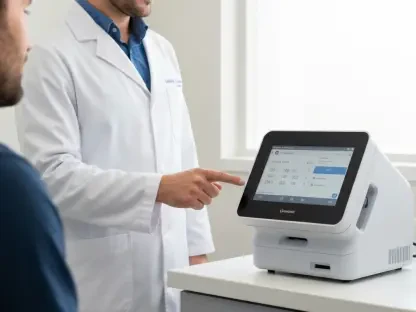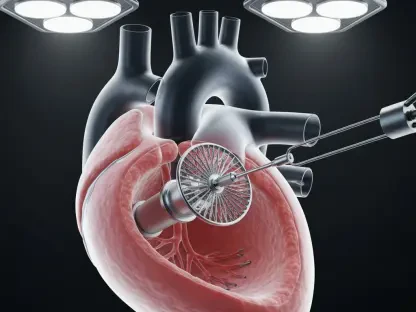Digital technology has become an indispensable element of modern healthcare systems, driving efficiency and enhancing patient outcomes. Ireland is currently witnessing a significant shift in its children’s healthcare sector, spearheaded by a five-year agreement between Children’s Health Ireland (CHI) and Sectra, a leader in medical imaging and cybersecurity. This partnership is set to introduce transformative digital solutions to the upcoming children’s hospital in Dublin, which aims to cater to children requiring specialized and complex care. The integration of advanced imaging solutions with electronic patient records marks a significant leap toward a more interconnected and efficient healthcare environment.
Integration of a Digital Imaging and Archival System
Transforming Diagnostic Processes
One of the most notable advancements resulting from the CHI-Sectra collaboration is the deployment of a consolidated vendor-neutral archive (VNA). This advanced system is designed to integrate seamlessly with CHI’s electronic patient record (EPR) system, streamlining the way healthcare professionals access diagnostic images. Traditionally, the retrieval and sharing of imaging data were hampered by system incompatibilities and time-consuming processes, often leading to delays in patient care. However, the new system promises to revolutionize clinician workflows by enabling faster access to comprehensive imaging data. This integration allows medical teams to make more informed decisions swiftly, facilitating a smoother and more efficient healthcare delivery process.
The enhanced interoperability between systems is a critical component of this digital transformation. By bridging different imaging modalities and linking them directly to patient records, healthcare providers can achieve a continuum of care that was previously challenging to maintain. The high level of interoperability ensures that clinicians, regardless of their location within the healthcare network, can access vital imaging information without unnecessary delays. Moreover, by centralizing all digital imaging, including a dedicated PACS for ophthalmology, the system supports a holistic approach to patient care, especially for those requiring interdisciplinary consultations and treatments.
Empowering Patients and Families
In addition to enhancing clinician efficiency, the integration of digital imaging systems extends significant benefits to patients and their families. The new technology enables parents to securely submit medical images for professional assessment, fostering a more inclusive approach to patient care. This capability not only empowers families by involving them directly in the care process but also helps in maintaining continuity and accuracy in medical records. The secure submission of images ensures that no essential data is lost or misinterpreted, enhancing the reliability of diagnoses and subsequent treatment plans.
The CHI-Sectra technology integration also underscores the importance of secure and efficient data management within healthcare. By ensuring that all imaging data is housed within a robust and secure environment, it minimizes the risk of data breaches and unauthorized access. This commitment to cybersecurity is critical in maintaining patient trust and safeguarding personal health information. Furthermore, the system’s capacity to handle large volumes of imaging data without compromising speed or access underscores its role in supporting high-demand clinical environments, where timely intervention can significantly impact patient outcomes.
Broader Digital Initiatives in Healthcare
Building a Networked Healthcare Ecosystem
Beyond digital imaging, Ireland’s children’s healthcare system is set for a broader technological overhaul that will further enhance service delivery. CHI’s collaboration with data technology provider InterSystems is focused on establishing a comprehensive interoperability platform. This platform is intended to facilitate seamless communication between disparate healthcare systems, empowering healthcare providers with complete and accurate patient data at any given time. The ability to access a comprehensive view of a patient’s medical history without the hurdles of navigating multiple systems promises to transform clinical decision-making and patient management significantly.
The focus on interoperability aligns with the overarching goal of creating a networked healthcare ecosystem in which information flows freely and securely among healthcare providers. This interconnectedness is not only vital for improving immediate patient care but also plays a crucial role in long-term health outcomes. By integrating various data points from a patient’s healthcare journey, clinicians can detect patterns, anticipate potential issues, and provide preemptive care. Thus, a networked healthcare ecosystem becomes a cornerstone for a proactive and preventive care approach, shifting the focus from treatment to wellness and overall health maintenance.
Enhancing Operational Efficiency Through Automation
Another critical aspect of the ongoing digital transformation is the enhancement of operational efficiency within healthcare facilities through automation and notification management systems. With the involvement of healthcare IT supplier Ascom, CHI is implementing an alert and notification management system designed to streamline internal processes. By automating routine tasks and ensuring timely alerts, healthcare providers are better equipped to focus on patient care rather than administrative burdens. This system will manage thousands of alerts daily, prioritizing those requiring immediate attention and reducing the risk of human error.
The integration of automated logistics not only reduces operational costs but also significantly impacts patient satisfaction. When healthcare operations run smoothly and without unnecessary delays, patients experience shorter wait times and more personalized care. Efficiency gains also allow healthcare providers to allocate resources more effectively, ensuring that staff are available where and when they are most needed. This focus on efficiency lays the foundation for a healthcare system that is both responsive and sustainable, equipped to meet the needs of a growing population with diverse medical requirements.
Technological Partnerships Paving the Way for Future Innovations
In the modern healthcare landscape, digital technology is crucial, boosting efficiency and improving patient outcomes. In Ireland, a transformative change is underway within the children’s healthcare sector thanks to a pivotal five-year agreement between Children’s Health Ireland (CHI) and Sectra, a company renowned for leadership in medical imaging and cybersecurity. This collaboration is poised to bring cutting-edge digital solutions to the soon-to-be-built children’s hospital in Dublin, which is designed to serve young patients with specialized and complex medical needs. By integrating advanced imaging technologies with comprehensive electronic patient records, this initiative promises to revolutionize the healthcare environment by fostering a more interconnected and efficient system. This partnership embodies a significant commitment to modernizing healthcare services, ensuring that the next generation receives the most effective, timely, and comprehensive care available. As such, it illustrates the critical role of digital innovation in shaping the future of healthcare delivery.









